| |
|
||||||||||||||||||||||||
| |
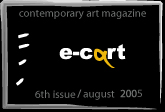 |
 |
|
||||||||||||||||||||||
 |
|
|
|
||||||||||||||||||||||
| |
|
||||||||||||||||||||||||
 |
|
||||||||||||||||||||||||
| |
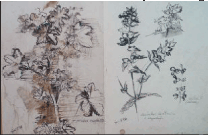 |
|
|
||||||||||||||||||||||
 |
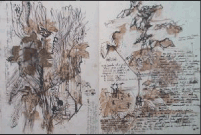 |
|
|
 |
 |
|
|||||||||||||||||||
 |
 |
|
|
||||||||||||||||||||||
| |
|
|
|||||||||||||||||||||||
| |
|
||||||||||||||||||||||||
| |
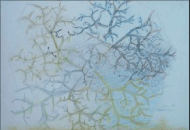 |
 |
|
||||||||||||||||||||||
| |
 |
|
 |
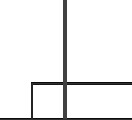 |
 |
|
|
|
|||||||||||||||||
| |
|
||||||||||||||||||||||||
| |
|
||||||||||||||||||||||||
 |
|
||||||||||||||||||||||||
 |
|
||||||||||||||||||||||||
 |
|
||||||||||||||||||||||||
 |
|
||||||||||||||||||||||||
| |
|
||||||||||||||||||||||||
| |
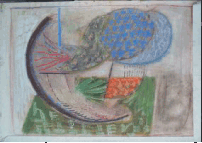 |
|
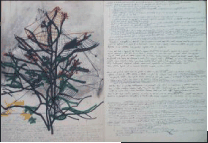 |
|
|
||||||||||||||||||||
| |
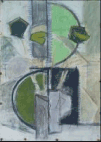 |
 |
|
||||||||||||||||||||||
| |
|
|
|
||||||||||||||||||||||
| |
|
|
|
|
|
|
|
|
|
|
|
|
|
|
|
|
|
|
|
|
|
|
|
|
|
Spira mirabilis.
The hymn of an inner growth's cyclical return Stefan Bertalan is an artist of a special kind: his restless quests, taken almost to fever-ness, are all aiming to synchronise the artistic reality with that of the world, seen in its primary meaning of cosmos.
Settled in Timisoara at the beginning of the 60s, soon after he had finished the study of painting at the Art Academy in Cluj, Bertalan became, together with Constantin Flondor, one of his teaching colleagues at the Art High school, an animator of the local art scene. His will of self-perfection pushed him constantly for a tireless and passionate work. He was considering himself unformed after finishing College: "I came from Cluj with 2 grams, this is how much weights a newborn bat; despite his weight, he is incredibly vital. I formed myself, in order to make for myself a work method that prevails over the exact copying of nature" - was the artist confessing recently. The meeting and friendship of the two with Roman Cotosman, whom they met in 1962, lead to the constituting of the first experimental art group in Romania, Group 111. This happened in 1963, when Cotosman had returned from Paris with the wish to change his means of expression (through the approach of monochrome monotypes and of constructivist collages) but also to found an avant-garde group after the model of the famous "Groupe de Recherche d'Art Visuel".
The period between 1963-1966, when the artists exhibited together for the first time in a regional exhibition, was considered one of "study constructivism" (to use a phrase released by C. Flondor), characterized by solid readings and comments from the texts of Kandinsky and Klee or comments of the kinetic works of Vasarely and Nicolas SchŲffer. While Cotosman extended his search to the movement beyond the surface of the painting, elaborating even ambient art projects with light stages, Flondor and Bertalan were drawing and painting geometrically in charcoal, watercolor and colored crayons (pastel) starting from elements in nature and realising rhythmical ordering of the ambient. Bertalan was working at that time for a series of folkloric objects ("cauce") painted in crayon (pastel) and transformed in a sort of structures.
Soon his drawings were to become purely geometric, realised in thin white trajectories on black cardboard. He thus created networks of elements, with an illusion of three-dimensional through the strong contrast between white and black and producing a virtual kinetic. In 1967 he made for the first time the passage from the bi-dimensional to the tri-dimensional, obtained through the creation of objects to be hang on the wall, the virtual kinetic movement being suggested by the white cotton threads, arranged spatially in a network, interlocking and projecting on the rectangular black background of the support. These kinds of works were exhibited in 1968 at the Kalinderu Gallery, on occasion of the first important exhibition that Group 111 had in Bucharest. It was then that Bertalan exhibited also a tri-dimensional work entitled Maxwell's Demon, the first spatial object, formed through the intersection of two perpendicular planes which surfaces were formed by oblique networks of white and black cotton threads.
The exhibition in Bucharest had a major role in the national recognition of the group, well received by the majority of the art critics and by the Bucharest art milieu and it lead to the artists in the group being selected for the participation at the Constructivist Biennial in Nuremberg, in 1969.
Together with the members of Group 111, there were exhibiting at this biennial also the artists Pavel Ilie and Mihai Rusu from Bucharest. This participation brought to them international recognition, insuring a place for the Romanian kinetic movement in important synthesis writings. For this biennial, Stefan Bertalan exhibited the large-sized work called "Polymorphism", which superposed flat surfaces made of Plexiglas, with a coloured geometric drawing, onto tri-dimensional structures made of transparent or coloured nylon threads, so that an optic vibration was produced, at the same time with a virtual movement. Constantin Flondor participated with a work formed by small mirror modules, covered with measuring glass ruler, called "The Pawns of the Glass King", a work that also contained a virtual kinetics, while "Quaternar", the project of Cotosman, proposed a real light-kinetics; this project was industrially made and had an engineer expertise. Once this important artistic moment consumed, Group 111 split apart, as Roman Cotosman settled himself for good in Philadelphia.
The need for communication and cooperation was the mobile of continuing the group activity, even under these new circumstances. Thus, Stefan Bertalan together with Constantin Flondor were going to lay the foundation for a new art group, Sigma group, starting with 1970, when more young artists joined them, who they were all teaching at the Art High school in Timisoara (Doru Tulcan, Elisei Rusu, Ion Gaita and the mathematician Lucian Codreanu).
A defining characteristic of this new group was the declared program of work, based on the principle of team and interdisciplinary work (mathematics, cybernetics, bionics, but also plastic structures). The first creation period of Sigma group (1970-1974) is characterised by projects made in common, visible also in the system of participation in exhibitions. One example of such a project was "The Informational Tower", conceived in 1970, mixing architecture and sculpture, exhibited information within a show of light and sound. But not only the public projects, as the geometric structure realized in 1971 for the hallway of the Students' House in Timisoara or the project of fountain which brought them an U.A.P. prize, have marked the important moments of the group's development; a new vision upon their subsequent evolution was to be marked by the action and the environment called "bloating structures" and realized at the Bastion Gallery in Timisoara, for the UNESCO Plastic Arts' Week. In the Bastion Gallery the rooms have been organized with bloating structures in the form of transparent tubes, onto which, during the opening, a dia and film projection took place. Thus, the spatial environment took the form of a happening with public assistance. In the same year, Bertalan, Flondor and Tulcan were invited to participate in the exhibition "Art and Energy" in Bucharest, where they created spatial installations which were separate but at the same time within a unitary ensemble that carried the unmistakable mark of the group. The last big common action of the group before they separated was "Multi-vision" (presented at the exhibition "Study 1", Timisoara, 1978), a spatial environment formed by a tri-dimensional structure made of coloured semi-transparent nets, spatially arranged in the form of a tetrahedron, onto which there was a projection of black and white and colour film for two cameras.
Stefan Bertalan was fascinating the other members of the group, a thing visible also in the portrait sketch made by Constantin Flondor: "His age, his life experience, his professional maturity, his dominating temperament and his non-conformism have made me look at him with admiration and with fear. He was like a fire in the vicinity of which everything burns, but whose shining is like a calling."
The sense for nature is for Stefan Bertalan part of his being, taking the shape of a living fulfilled in a destiny. In the search of this fulfilment, the artist starts every new day by dedicating himself with an unusual intensity to his studies and observations. Aimed towards the plants and the animals, the relationship between the light and the shadow, between the living world and the sun, between the sky's meridians and the position of the sun on the sky, his researches are being formulated in a unifying vision of the universe. The intensity of his feelings in front of nature, translated through artistic gestures of a great sensitivity, sometimes even dramatic, are mixed with exact studies - of bionics and mathematics (geometry) - creating a mixing of an obvious plasticity that reminds the vocation of the universal artist in the same spiritual family with Leonardo. But here is how Bertalan explains this orientation that he found for his own researches: "From years now my creating activity is motivated for me as a vital necessity of thinking this process in a purpose of observation, identification and psychic projection through some experiences with biological facts, such as: [the plants'] categorization, growth, caring for, the formal orientation towards light, form, organization, general structure, statistically noted down in the medium of drawing, photography, simultaneously covering forms and territories of curiosity, force, imitation and model - the emphasizing of the ego and the expression of personal potentials, the construction of spaces through other means than the known ones, finally the reintegration in the modern man's life of an ancient and primitive soul, a unity between subject and perceived object."
These preoccupations, governed by an inner structure like his own, have lead him to the first experiments in nature; self-taught through readings and examples in the art world, Bertalan tried to keep his native impulses, the archetypes, to cultivate his origins, which came with him from generations and which in the end constitute the originality of each artist. In July 1972 he organized on the border of the river Timis an environment, which he called "City - natural environment". In the sand of the beach he imagined a "hilly" relief onto which he intervened with rods, sticks, dry dung, paper, cardboard, drawing an imaginary settlement which, photographed from near, acquired an impressive "reality". This process, simple in appearance, of changing the sand forms, translates a manifestation of a profound cognitively character, a vast relationship between brains and nature, a "feeding" of the artist through experiment. A year later, in August 1973, ironically dedicated to the celebration of 23 august , as the artist himself declared, he realized together with architect Serban Sturdza the action "Tensioned stripes over the Timis", following an inner union with nature. The river Timis evoked for the artist a rhythm of life, a vital element such as an aorta for a body ties more vital organs, in this case, the human settlings on the edge of the river. The attraction for new materials - nylon threads or colour plastic stripes - was a constant of the artists in Sigma group, and for Bertalan and Flondor this can be traced back to the middle of the 60s, in the constructivist period. The use of intensely coloured stripes, especially the red ones, will generalize from that moment on also in the group actions. The artist has described this action showing that he followed the relation between the horizontal plane of water (with its reflexes and mirroring) and the vertical one of the willows, within which he stretched and tensioned the coloured stripes trying to realize a "flexible bridge" of oblique and curve lines. The way in which the action developed left room also for the accident - that is for the elements of nature which acted unexpectedly - wind, light, water.
The same type of problematic was picked up again a few years later in the action - intervention called Membrane - Datura stramonium (August 1976), which happened at the Green Forest, action for which there participated also as assistants some students in architecture. Also in this case Bertalan explored the expressive possibilities of the tensioned, coloured or transparent stripes and of some pentagonal white fabric surfaces, realized after the vegetal pattern of a plant called "datura"; this flower's pattern which opens progressively during the night and it dies in the morning is taken from nature and transposed under the form of membranes onto which the lights and shadows play of the leaves was projected. These diaphanous geometric structures, implanted by the artist in the organic medium of the forest, impose a new spatial order which, although coming from outside, respects nature's organizing principles.
Close to his first action at Timis, in 1972, the action called "Dracsina - village from morning till evening", also in the proximity of the river Timis, nearby a village, used a spatial organization imitating sand relief that have turned into "islands" on a river and structures made of aluminium discs and nylon foils, with the purpose of observing the plastic expressivity of these diverse materials in an environmental situation. The action, which developed for a whole day, also took into account the temporal aspect, and the way the flowing of the day reflects in this installation, as well as the relationship with the animals or plants in the village's vicinity.
Bertalan looked into his researches also to Leonardo, about whom he asked himself whether and how he is studied today by the young generations of artists. Together with 50 students in architecture he realized the action "Leonardo. Show for the public" (June 1978) which took the form of an intervention in the Central Park of Timisoara. This action had been preceded by another one, in 1977, called "A plastic Sunday. Show for the public of the park", which was only a "rehearsal" of what in the following year materialized as a coherent problematic. The participants have each realized a complex geometric form, aiming at studying the way in which these forms are perceived in the space or how they act in relation to the light and shadow. The forms, spread in the grass or suspended by the trees' branches, were accompanied by texts-quotes from Leonardo. This action, which had an immediate didactic purpose, that of studying practically and finding solutions for some questions, became, through the moving out in the public space, a form of expression which wanted to engage the participation of the passers-by through an attempt of modelling the public taste or inciting the development of some personal opinions.
From this manifestation to the action in December 1979 at the Kalinderu gallery in Bucharest, called "I lived for 130 days with a sunflower plant" there was only one step, although an important one, which put the artist in the position of acting by himself, directly in front of a public. At the invitation of Andrei Plesu, who had previously visited him in Timisoara and knew his artistic project dedicated to the sun-flower, Stefan Bertalan accepted to realize an action of a very personal character, which remained, in its way, unique in its kind in Romania. His project had started from the study of this plant's growing, from the germination of the seed, going through all the phases of its evolution - growing, blooming, yielding of the fruit and than death. On the duration of this evolution, of 130 days, the artist has made documentation with photos and drawings, and he kept in writing - as in a diary - the observation of the smallest daily modifications. The action, motivated by the biological development in a complete cycle of a plant, acquires a philosophical consistency turning into a meditation upon the human and the cosmic existence. One can find in Bertalan's actions and texts also an ecological sensibility (characteristic for all the members of the Sigma group), but which in his case grows to an interpretation of planetary proportions. The event itself took place around an installation made of dry sunflower stem, on which there were added pages with diary notes and drawings made during the documentation with the evolution of the plant. The artist has read his philosophical texts in poetic formulations and performed in front of the public a series of movements like a ritual transposing the content in a more eloquent, more impressive way.
The cosmic feeling I was talking about earlier was made evident also in the orientation of the human figure after the fundamental directions, in the 4 cardinal points, which the artist evokes in a sort of introduction, in fact translating the myth of civilization in competition with nature: "We are headed face towards the South, the home and cradle of our culture. To our left we have the natural landscape - the cultivating soul of the earth - of life, the Sunrise towards which we spin only our head and hands. There - Nature - natural instincts, models of development, millenary experience."
After this he evoked the summer atmosphere, in which the sun flower appeared, through contrast with the cold of late fall, the moment before the action: "It's late fall or beginning of season, and the forces of wet seed rottenness on the edges of things and deeds. Let's close our eyes and imagine the good of a sunflower's existence. Let's tell ourselves that it's good to own a sunflower stem in a late fall - the nude of a sunflower stem. Then let's imagine it in its vital impetus, with leaves opening at the dawn, with its hymn or gesture that aims towards light and ascension (...)." Resuming in fact the essence of this plant, Bertalan defines it as "spiral, movement and gesture", showing that the plan of action started from a seed: "The seed is a folded plan. We approach it as object of the senses generating other plans, as organs of our life." The cycle of growth is evoked by the evolution of leaves, compared with the existence of human senses, transposed then in a movement of constellations on the sky: "Its juicy leaves in the sun, leaves that look like wing-organ and screw up in the phrases of existence, with vocals, consonants and diphthongs articulated in a juicy language starting with the morning - a succession of spaces, rhythmic growth that returns all the time".
However this state of reverie that gives birth to a true vision upon the universe is ended with a wake to immediate reality - the late autumn and the room where there is only a dry sunflower stem. The artist is persuaded that "the lesson of nature" would serve as an existential model and thus he continues the series of researches upon the vegetal world with the vine, the beans or the cauliflower. These examples constituted for him models of adaptation to life and practical solutions offered by the vegetal world. Following the amazing vitality of the plants, the vine bud which grows and ramifies in stalks, the fractal structure of the vine leaf or the fruit of the cauliflower, the artist distinguishes the trajectories of networks and communication and finally the balance between order and chaos which makes a new language, hard to define, that of the organic world.
The opposition between the organic and the inorganic world was better emphasized by the action realized at the GÓrda Seac?, in the Apuseni Mountains (1980): on a deforested versant and full of big rocks brought by a torrent, on the valley of Girda Seaca, the artist, whose body semi-covered with a white fabric stripe, was detaching himself sculpturally on the background of rocks, posing in front of the camera. The contrast between the fragility of the human body in relation to the immensity of the inorganic world of the rocks constitutes a theme of reflection on caducity, on the transitory by comparison with the "lasting" elements.
The same relation between organic and inorganic, between the body and the trace left by it on "soft" material like the sand one can find in Bertalan's action with candles at the river Timis, for which his son Andreas posed (1980-1981). The nude body of the kid was photographed on the dusk, at the light of the candles, so that his real traits were erased and the boy became transfigured by the night, an ambiguous apparition whose reality was questioned. The lighted body became something else than in reality, and his trace left in the sand was a negative which thus illuminated turned into a positive, which from a concave relief, due to the oblique lighting, looked convex.
After searches which were many times torturing, on a ground which was very little researched in the Romanian artistic milieu (comparing with experiences in other parts of Europe), Bertalan arrived to some beliefs which he structured most eloquently in his actions and installations. This is what the artist was confessing in a letter addressed to the critic Gheorghe Vida: "For a long time it seemed that my biology studies are taking me nowhere but to researches with no result - and still, by being consequent to the tendencies, I headed naturally, with no rush, towards the senses of my own preoccupations - although in the world there have been environmental practices long before I made my first attempts at the river Timis, the second stage, the present one, was shaped through constancy and through the huge isolation in which I live and we live, focusing ourselves on biology, which for the first time took me for study in front of the house, where there is sun; then the necessary relations took me for good from the bi-dimensional frame of the painting to the real space."
The artistic system initiated by Stefan Bertalan remained one interpreted in a personal key; even if the public was not introduced to the meaning of words-notion with special symbolic value and his artistic gestures, the communication realized through empathy. At the beginning of the 80s, his family chose the path of emigration, so the artist, marginalized and systematically eliminated from exhibitions, fired from his job as college professor, leaved the country after a "quarantine" period which threw him in a profound drama. His work is not known enough today, as a consequence of a strange and unfavourable circumstance, which still planes upon him.
Ileana Pintilie